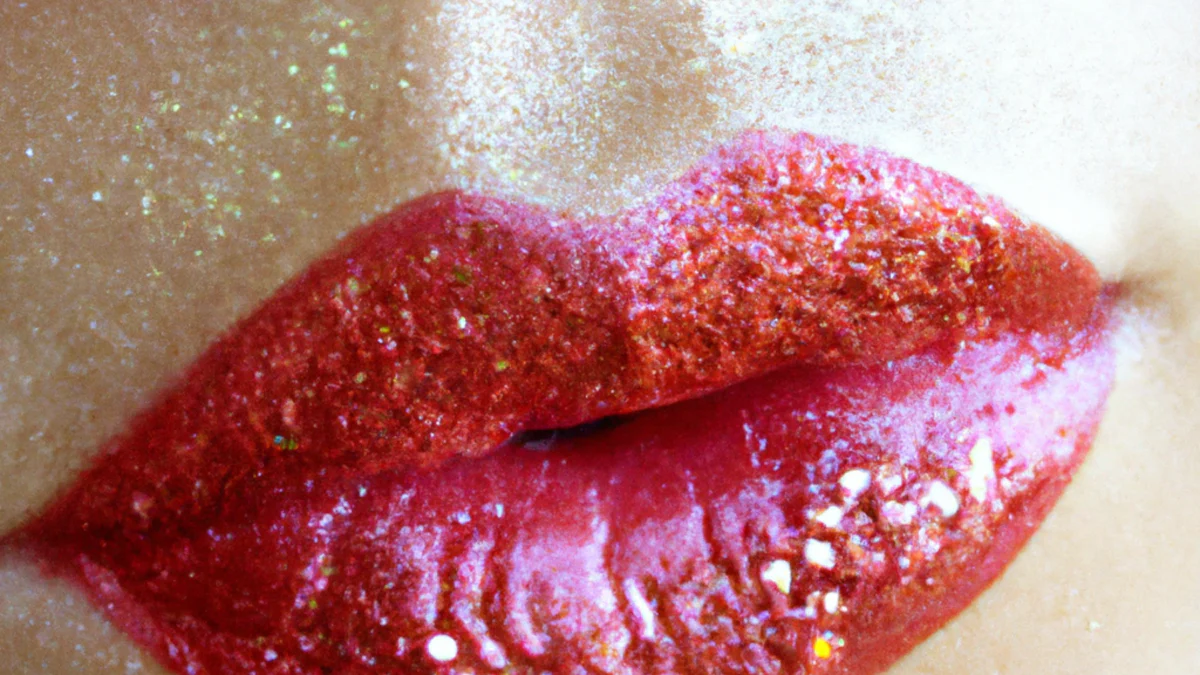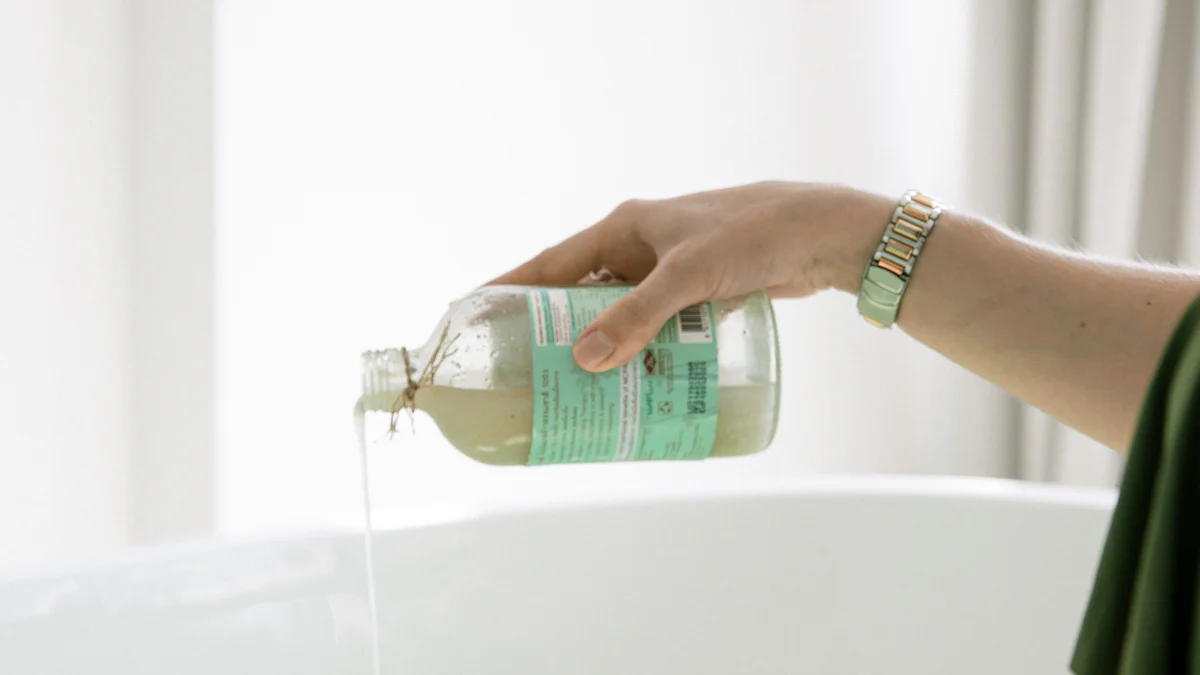The Evolution of Tinted Lip Gloss: Trends and Innovations

Tinted Lip Gloss has become a staple in beauty routines, reflecting market trends and consumer preferences. Understanding its evolution helps you appreciate the innovation behind this product. The journey from simple shine to sophisticated formulations highlights formulation advancements. Tinted Lip Gloss Reviews reveal how glossy finishes and vibrant colors captivate users. The market thrives on these advancements, offering products that enhance both appearance and lip care. Social media platforms amplify these trends, making Tinted Lip Gloss a dynamic part of beauty culture. Explore why this versatile product continues to charm and evolve.
The Birth of Lip Gloss in the Early 1900s
The Introduction of Lip Gloss
The First Lip Gloss Products
In the 1930s, Max Factor introduced lip gloss to the world. Hollywood stars needed a product that added shine to their lips on film. Max Factor created the first commercially available lip gloss, called X-Rated, in 1932. This product provided a subtle shine that enhanced the appearance of lips on screen. The innovation quickly caught the attention of makeup enthusiasts.
Initial Consumer Reception
Consumers embraced lip gloss for its unique shine and appeal. Moviegoers admired the glamorous looks of Hollywood stars. The product gained popularity among women who wanted to replicate those looks. Tinted Lip Gloss Reviews from that era highlighted the excitement surrounding this new beauty product. The demand for lip gloss began to grow as more people discovered its benefits.
Early Formulations and Ingredients
Basic Ingredients Used
Early lip gloss formulations contained simple ingredients. Manufacturers used oils and waxes to create a glossy finish. These components provided the desired shine and texture. The simplicity of these ingredients allowed for easy application and removal. Consumers appreciated the smooth feel and attractive appearance.
Challenges in Production
Manufacturers faced challenges in producing lip gloss. Ensuring consistent texture and shine proved difficult. The formulation process required precision to achieve the right balance. Despite these challenges, the allure of shiny lips drove innovation. Companies continued to refine their products to meet consumer expectations.
The 1950s and 1960s: The Rise of Glamour
Influence of Hollywood
Iconic Lip Gloss Looks
Hollywood stars like Marilyn Monroe and Elizabeth Taylor set new beauty standards. Glossy, voluptuous lips became symbols of glamour and elegance. These iconic looks inspired women worldwide. Many sought to replicate the glossy lips seen on the silver screen. The influence of these stars extended beyond films. Beauty trends shifted towards a more polished and glamorous aesthetic.
Celebrity Endorsements
Celebrities played a crucial role in popularizing lip gloss. Endorsements from leading actresses boosted product appeal. Fans admired their favorite stars and wanted similar beauty products. Companies capitalized on this trend. Marketing strategies focused on associating products with celebrity glamour. This approach increased consumer interest and sales.
Technological Advancements
Improved Formulations
The 1950s and 1960s saw significant advancements in lip gloss formulations. Manufacturers developed products with better shine and texture. New ingredients enhanced the longevity and comfort of lip gloss. Consumers appreciated these improvements. The demand for high-quality lip products grew rapidly. Innovation in formulations became a key focus for beauty brands.
Packaging Innovations
Packaging also evolved during this era. Companies introduced sleek and stylish designs. Attractive packaging appealed to consumers seeking luxury. Compact and portable designs made lip gloss easy to carry. This convenience added to the product's popularity. Packaging innovations contributed to the overall allure of lip gloss.
The 1970s: The Era of Flavored Glosses
Introduction of Flavored Lip Gloss
The 1970s marked a significant shift in lip gloss history. Bonne Bell introduced Lip Smackers, the first flavored lip gloss. This innovation captured the imagination of young consumers. Flavors like strawberry and watermelon became instant hits. The appeal lay in the fun and novelty of these flavors.
Popular Flavors
Consumers loved experimenting with different flavors. Popular choices included cherry, bubblegum, and vanilla. Each flavor offered a unique experience. The variety encouraged users to express individuality. Flavored glosses became a must-have accessory for many.
Marketing Strategies
Marketing strategies played a crucial role in this era. Companies targeted young audiences with playful advertising. Bright packaging and catchy slogans attracted attention. Promotions often featured popular celebrities. These efforts boosted brand recognition and sales.
Consumer Preferences
Consumer preferences began to evolve during the 1970s. Personalization became a key trend. People wanted products that reflected their tastes and personalities. Flavored glosses provided a perfect solution. The ability to choose from multiple flavors appealed to many.
Shift Towards Personalization
Personalization allowed consumers to feel unique. Flavored glosses offered a way to stand out. Users enjoyed matching flavors to moods or occasions. This trend reflected a broader desire for individuality in beauty products.
Impact on Sales
Sales of flavored glosses soared due to these trends. The demand for personalized products drove growth. Companies responded by expanding flavor ranges. This success highlighted the importance of understanding consumer preferences. The era of flavored glosses left a lasting impact on the beauty industry.
The 1980s and 1990s: Bold and Bright

Emergence of Bold Colors
The 1980s and 1990s introduced a vibrant era for lip gloss. Bold colors became a defining feature of this period. Madonna, with her hit song Lucky Star, showcased neon lip gloss shades like pink, red, and orange. These colors reflected the daring cultural trends of the time. The popularity of bold shades grew as celebrities embraced them.
Popular Shades
Neon and shimmery shades dominated the lip gloss market. Consumers favored bright hues that stood out. Popular shades included electric blue, vivid purple, and fiery red. These colors allowed individuals to express their unique style. The market trends of the time encouraged experimentation with bold looks.
Cultural Influences
Cultural icons like the Spice Girls and the cast of Friends influenced lip gloss trends. Their glossy lips became symbols of fashion and fun. The 1990s saw a shift towards vibrant, shimmery textures. Lip gloss became essential for achieving the trendy looks seen on television and in music videos. The cultural impact of these icons drove the demand for bold lip gloss colors.
Economic Factors
Economic conditions also played a role in the lip gloss market. During economic downturns, consumers sought affordable luxuries. Lip gloss provided an accessible way to indulge in beauty products without breaking the bank. The affordability of lip gloss made it a popular choice during challenging times.
Impact of Economic Downturns
Economic downturns influenced consumer spending habits. People prioritized smaller, more affordable items. Lip gloss offered a cost-effective way to enhance appearance. The market trends during these periods showed increased sales of lip gloss. Consumers appreciated the value and versatility of this beauty product.
Lip Gloss as an Affordable Luxury
Lip gloss emerged as an affordable luxury in the beauty industry. The product provided a sense of indulgence without high costs. Consumers enjoyed the ability to experiment with different colors and finishes. The accessibility of lip gloss contributed to its widespread popularity. The market trends reflected a growing preference for products that combined quality with affordability.
The 2000s: Experimental Formulas
The 2000s marked a transformative period for lip gloss. Beauty brands began experimenting with innovative ingredients to meet consumer demands.
Introduction of New Ingredients
Long-lasting Formulas
Manufacturers focused on creating long-lasting formulas. These products aimed to provide extended wear without frequent reapplication. New polymers and advanced technology played crucial roles in achieving this goal. Consumers appreciated the convenience of gloss that stayed vibrant throughout the day.
Hydrating Properties
Hydration became a priority in lip gloss formulations. Brands incorporated nourishing oils and natural butters. Ingredients like shea butter and jojoba oil offered moisturizing benefits. This shift responded to consumer demand for products that cared for lips while enhancing appearance. The combination of shine and hydration set new standards in beauty products.
Rise of Niche Brands
Indie Brands and Innovation
The rise of niche brands brought fresh innovation to the market. Indie companies introduced unique formulations and bold colors. These brands often focused on natural and organic ingredients. Consumers valued the creativity and authenticity of indie products. The diversity in offerings expanded choices for beauty enthusiasts.
Consumer Reviews and Feedback
Consumer reviews gained importance during this era. Online platforms allowed users to share experiences and opinions. Feedback influenced product development and marketing strategies. Brands listened to consumers and adapted to their preferences. This interaction fostered a sense of community and trust between brands and users.
The 2010s: The Age of Social Media
Influence of Beauty Bloggers and Influencers
Social media platforms like Instagram, TikTok, and YouTube transformed the beauty industry. Influencers and beauty bloggers became key players in shaping trends. Viral trends emerged rapidly, driven by these influential figures. Lip gloss gained popularity through tutorials and reviews.
Viral Trends
Beauty influencers created viral trends that captivated audiences. Glossy lips became a must-have look. Tutorials showed how to achieve perfect shine. Followers eagerly tried recommended products. This engagement boosted sales and brand visibility.
Consumer Engagement
Social media encouraged direct interaction with brands. Consumers shared experiences and feedback. Brands responded quickly to preferences. This dialogue fostered a sense of community. Engagement drove innovation and product development.
Customization and Personalization
The demand for unique products grew in the 2010s. Consumers sought personalized beauty solutions. Customization became a significant trend. Lip gloss brands embraced this shift.
DIY Lip Gloss Kits
DIY lip gloss kits offered creative freedom. Consumers mixed colors and flavors at home. Kits provided a fun, hands-on experience. Personalization allowed users to express individuality. This trend reflected a desire for unique beauty products.
Tailored Products
Brands introduced tailored lip gloss options. Consumers selected shades and finishes. Personalized products catered to specific needs. This approach enhanced customer satisfaction. Tailored offerings strengthened brand loyalty.
Current Trends: Skinification and Multifunctionality

The 'Skinification' of Cosmetics
Skincare Benefits in Lip Gloss
Modern lip glosses offer more than just shine. Brands now include skincare benefits in formulations. Ingredients like nourishing oils and butters provide hydration. Antioxidants and vitamins protect lips from environmental damage. SPF in lip glosses shields against harmful UV rays. Consumers enjoy the dual benefits of beauty and care.
Consumer Demand for Healthy Products
Consumers prioritize health in beauty choices. The demand for products with skincare benefits increases. People seek lip glosses that hydrate and repair lips. Anti-aging and lip-plumping properties attract attention. The market responds with innovative formulations. Brands focus on meeting consumer expectations for healthy products.
Multifunctional Products
Lip Gloss with Added Benefits
Lip glosses now serve multiple purposes. Products combine color with skincare benefits. Hydrating ingredients keep lips soft and smooth. Long-lasting formulas reduce the need for reapplication. Lip glosses with added benefits enhance user experience. Consumers appreciate the convenience of multifunctional products.
Market Response and Future Directions
The market embraces multifunctional lip glosses. Brands innovate to stay competitive. New formulations continue to emerge. Companies explore natural and organic ingredients. Consumer feedback guides product development. The future of lip gloss includes more advanced and versatile options.
The journey of tinted lip gloss showcases vibrant trends and innovations. The evolution reflects a shift towards sustainability and inclusivity. Modern formulations offer long-lasting wear and hydration. Consumers now seek products with SPF protection and diverse shades. The market adapts to changing tastes by integrating digital technologies and personalization. Lip gloss becomes an expression of individuality and conscientious living. Future advancements will continue to enhance user experience. Expect more sustainable and multifunctional options. Embrace the dynamic world of tinted lip gloss as it evolves with style and care.
